CRAFTING FUTURES : A BRITISH COUNCIL CULTURAL EXCHANGE PROJECT WITH TBILISI STATE ACADEMY OF ARTS, GEORGIA
The project asks the following questions: How can historic textiles from Georgia be re-imagined through contemporary analysis, fabrication and reworking by two contemporary textile artists: one from the UK and one from Georgia? How can this approach of collaboration offer a new model of working to bring a tradition of textile practice into a contemporary light and shed meaning on its cultural identities?
In global terms, the project seeks to shed a light on the cultural significance of traditional textile practices through contemporary enquiry and practical outcomes and debates. Historic textile work is a powerful stimulus for contemporary textile thinking, and in doing so claims value and relevance for both traditional and contemporary forms of textiles. Specifically, the project demonstrates that the contemporary textile artist can offer credible, innovative approaches to traditional textile techniques that are under threat in Europe, and creates a strong new international platform for the new study and consideration of historic and contemporary Georgian textile practice within the context of a wider textile community. The artists selected for this project both have scholarly knowledge of the traditional practice of textiles and are actively working individually to create a contemporary place for these techniques. The Crafts Study Centre has an historic link to traditional textile practice through the many makers whose archives and works are held at the CSC. The International Textile Research Centre seeks to provide opportunities for the transition from traditional to contemporary textile practice. The University for the Creative Arts is the leading specialist arts university in the UK and has craft practice at the forefront of its courses in the School of Craft and Design.
- Professor Simon Olding, Director of the Crafts Study Centre and Professor Lesley Millar, Director of the International Textile Research Centre
THE ARTISTS
LINDA BRASSINGTON, UNIVERSITY FOR THE CREATIVE ARTS, FARNHAM, ENGLAND
As a specialist in printed and dyed textiles, I have been fascinated by resist dye processes for more than thirty years; seeking to understand the detail of their application, and exploring the creative potential of their inherent qualities through art residencies, practice-based research and design projects.
In all of my field study visits to India, Japan, former Czechoslovakia and other European nations, the resistant materials I have encountered in traditional indigo dyeing have most commonly included starch-based substances – wheat, rice, maize and other cereal crops – each one re-purposed in the context of cloth. I am intrigued that the term supra, meaning tablecloth, also translates as 'feast'. As such, it seems that food and textiles are inextricably linked in Georgian culture, and food substances are implicit in the traditions of resist dyeing.
Consequently, the preparation, celebration and sharing of food will form the basis for my response to this project; the starting point for a re-imagining of supra in my work.
Watch Tina Kliashvili and her colleague Vakhtang Kaishauri create part of a Lurji Supra ‘blue tablecloth’.
TINATIN KLIASHVILI, TBILISI STATE ACADEMY OF ARTS, TBILISI, GEORGIA
I am textile designer and have been working in textiles all my professional career. This has included the introduction of modern technologies in traditional felting in which I developed new technology for felting for clothes. I have also revived the lost technology in Georgia of dyeing textiles with indigo color.
The method of “cold vat dyeing,” which originated in the East, spread widely in Georgia in 17th century. These textiles were colored blue using indigo paint, obtained as a result of processing of the indigo plant. The specific character of the patterns and, most importantly, the color, made Georgian textiles different from others. These products are known as lurji supra, the “blue tablecloths.”
Unfortunately, the method was lost in the 90s of the 20th century. A small research laboratory started its activities at Tbilisi State Academy of Arts. My goal was to restore the original, long-forgotten textile technology of the seventeenth to nineteenth centuries. The research and trials lasted for several years. We borrowed patterns from wall paintings, ancient manuscripts, and figurines from the Bronze Age. The laboratory has been working at full capacity for 10 years now. Lost technology was recovered and consequently both tablecloths and other artistic panels are created. Students master the method and create their own individual works. I hope that the works representing blue tablecloths will be placed a high value and this field will always be relevant.


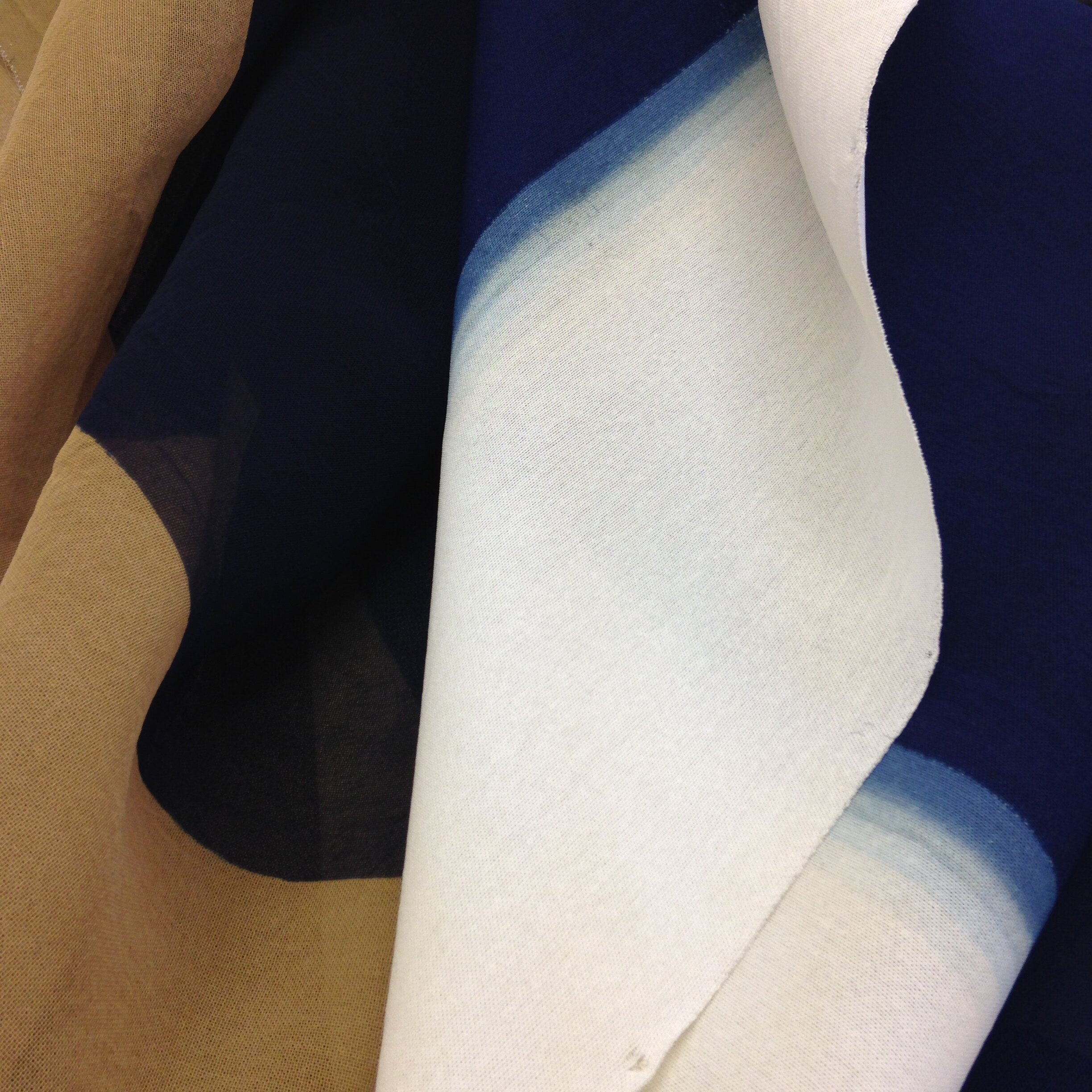
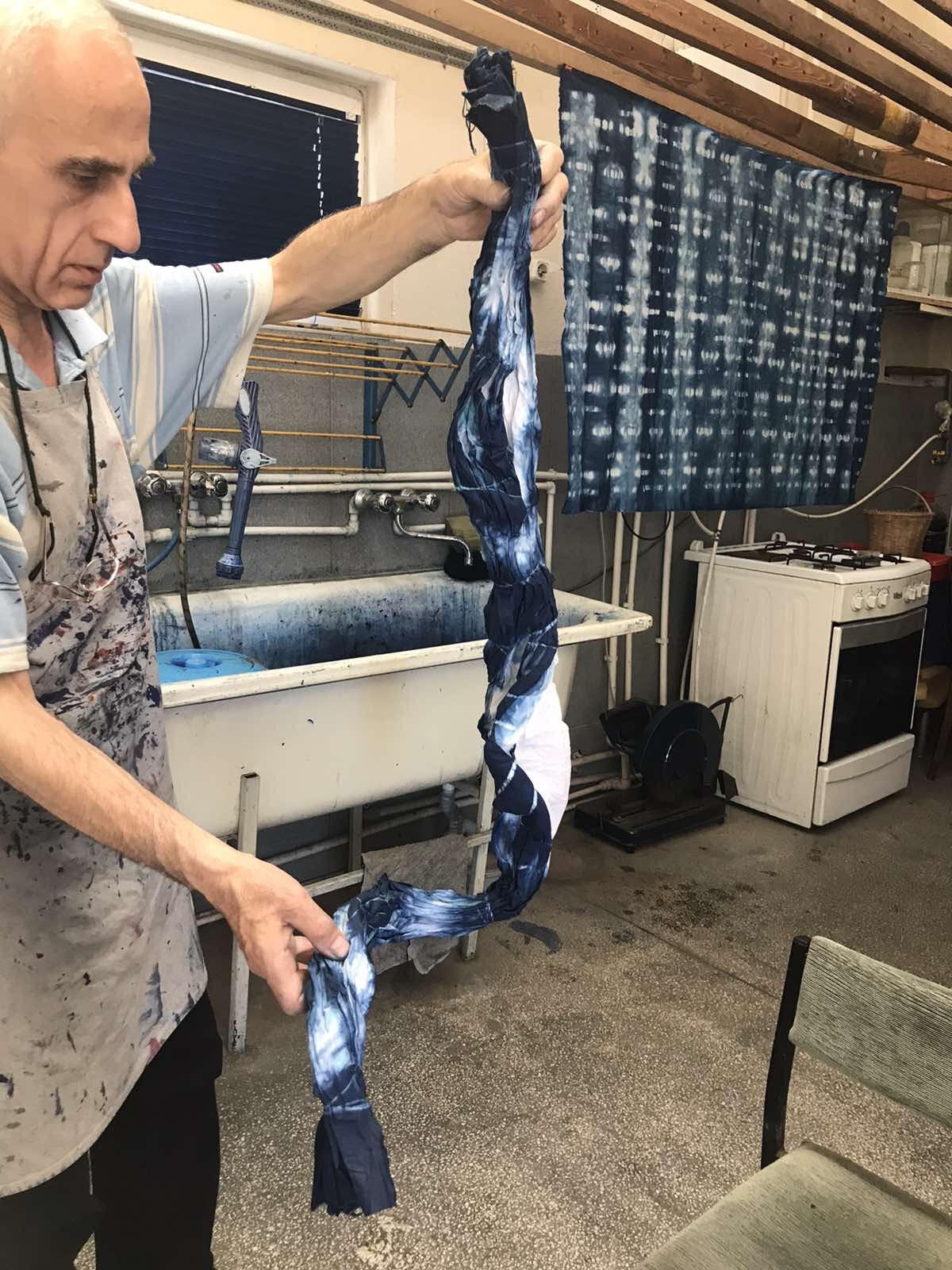


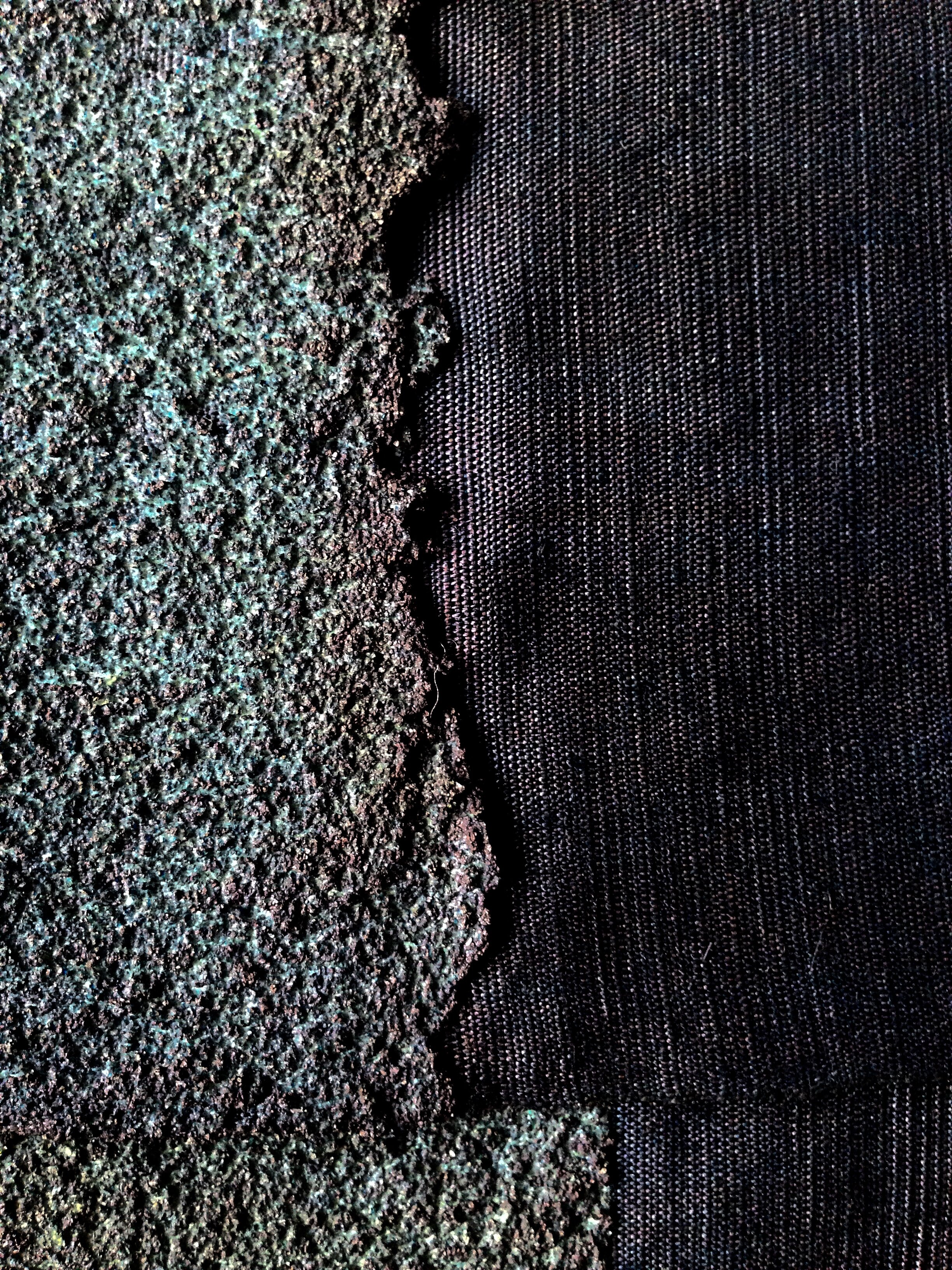
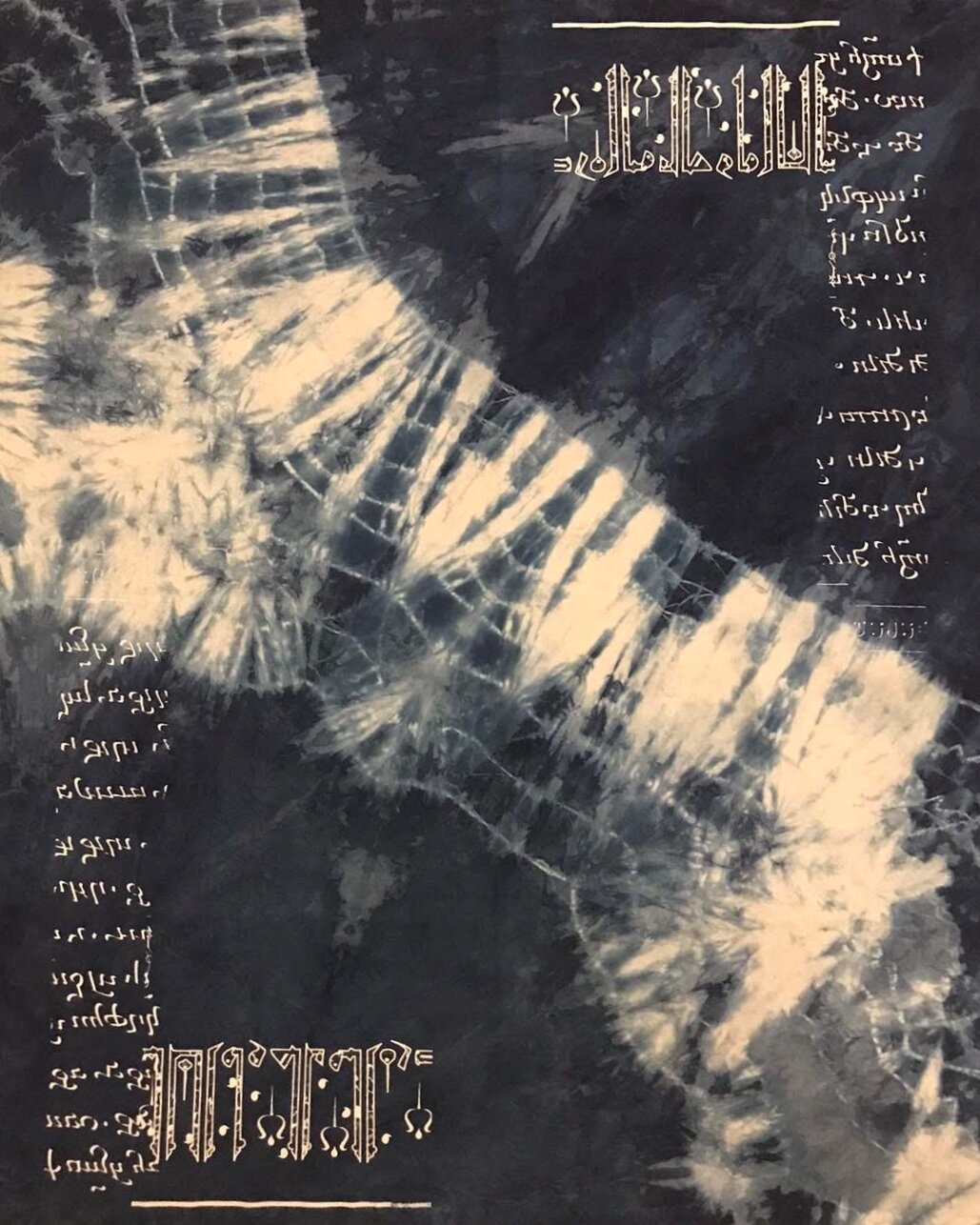


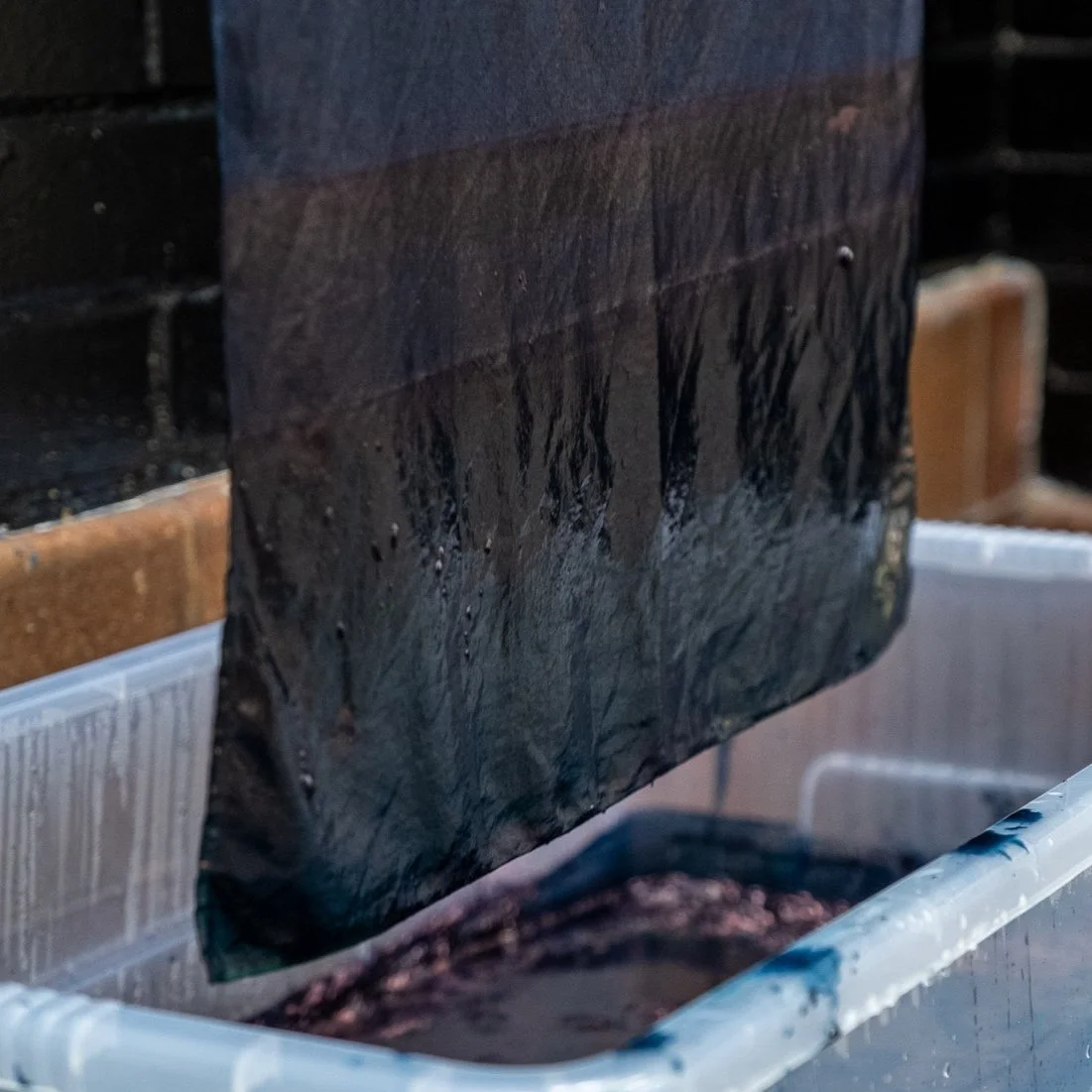




















Containing indigo within a defined shape requires a boundary. Traditionally, this is a barrier of resistant material – paste, wax, clamps. Through this project I have recorded new approaches to these principles. I have pulled, stretched and cut dough into shapes – investigating their potential to resist dye, while capturing them as images for screen and incorporating these images as discharge prints on cloth.